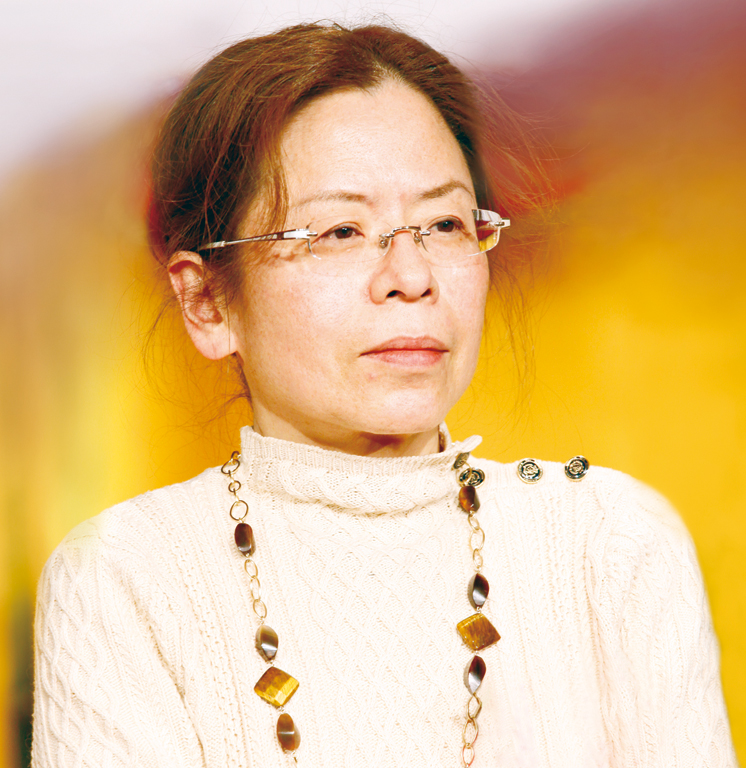
Translating Women Is Essential: Allison Markin Powell on translating Kaoru Takamura’s groundbreaking Japanese Crime epic
August may be Women in Translation Month, when we consider the importance of translating literature by women writers—all fine and good, right?—but what motivates someone to take on the task of translating Kaoru Takamura’s Lady Joker, a book that runs over 1,500 pages in its original Japanese?
Japanese crime and suspense fiction—especially in translation—is dominated by male figures. Not entirely, of course, but for every outlier by a woman writer such as Out by Natsuo Kirino or Confessions by Kanae Minato, there are multiple volumes available by Seicho Matsumoto or Keigo Higashino tipping the scales well back to the other side. This imbalance is also reflected in the broader world of Japanese literature in translation, something I first noticed in 2016, at an informal Women in Translation Caucus that convened at the London Book Fair. I happened to be there in person, as did fellow translators Lucy North and Ginny Tapley Takemori (with whom I would soon form the collective Strong Women, Soft Power). Talking amongst ourselves, we agreed that Japanese women writers seemed to be pretty well represented—we could rattle off the names of a number of contemporary authors whose work we were glad to see being published in English, in our own translation or those of our colleagues. Books had appeared by authors such as Hiromi Kawakami, Banana Yoshimoto, Yoko Tawada, and Kyoko Nakajima, and there was interest building in other writers whose work was gaining attention.
However, when I decided to do a quick count of recent titles, using the database readily available on the blog Three Percent, I was gobsmacked by the results. Looking at the past few years (again, this was back in early 2016), the proportion of women writers among the number of books published in translation from Japanese ranged from twenty-four to thirty percent. Even if my fellow translators and I had the impression that works by Japanese women writers were being translated and published, the data showed otherwise.
Curious about the demographics of the Japanese source material, I decided to look at the authors who had won the two most well-known literary awards in Japan, the Akutagawa Prize and the Naoki Prize, and also at the authors of the fifty bestselling novels each year. I found that women writers were well represented in both areas; there was something close to parity, and women had even outperformed men in some years.
So, I wondered, where was the disconnect? My cursory investigation revealed, at the very least, that contemporary Japanese literature in English translation was not an accurate reflection of the literary landscape in Japan. What could be done about this?
A few years before, a trusted friend had recommended the book Lady Joker by Kaoru Takamura. She warned that it would “get my kanji up” and, coming from someone who was raised bilingually, I took it as an adequate warning—and challenge—and picked up a copy of the first volume (of three). It was immediately clear why my friend had suggested Lady Joker—Takamura’s prose was muscular and assured, the narrative intriguing from page one. Not long after, at a meeting with literary agents in Tokyo, when I learned that they worked with Takamura, I mentioned that I was enjoying Lady Joker. And it wasn’t long before I was contacted by Soho Crime’s Associate Publisher Juliet Grames, with whom I had worked on several books by Fuminori Nakamura. Juliet had been on the lookout for a strong Japanese female crime author, so it shouldn’t be surprising that she had acquired the rights to publish Lady Joker from that same agent. Was I interested in translating it? she asked.
My answer was a resounding “yes.” I introduced Juliet to a friend and fellow translator, Marie Iida, and we proposed a co-translation. Born in Japan, Marie was familiar with the stature that Takamura occupies in the public sphere and the novel’s status as a cultural touchstone, even twenty-five years after its publication. Together Marie and I—similarly if foolishly undaunted by the scope of the project—agreed to undertake this massive translation, unaware of how many years and how much research it would require.
Intricately plotted with dozens of characters in its dramatis personae, Lady Joker is a “systems crime novel,” a searing indictment of corporate and political corruption and social inequality in late twentieth-century Japan, and as David Peace pointed out in an interview with the BBC, because Takamura is specifically calling out injustice within the extremely male-dominated spaces that make up the upper echelons of Japanese society—corporations, politics, the press, as well as the police and the judiciary—it is a deliberate choice to populate the novel with almost entirely male characters. Takamura’s position as an outsider is precisely what enables her to maintain a critical distance, in order to interrogate these rigid patriarchies. Although various men have written about how shadowy corruption and conspiracy are inextricably entwined with the Japanese public and private spheres, none have done so quite like Takamura in Lady Joker.
I am immensely proud to have been part of the team of women—agent, editor, co-translator—that has worked to bring the English edition of Lady Joker to readers. By reading women in translation—by buying or borrowing books but also by talking about them, in any medium—readers demonstrate that there is a demand for the subjects that women choose to write about and the perspective that they offer. That it makes a difference who tells the story, and why they tell it.